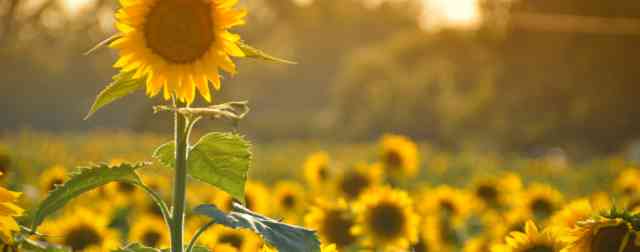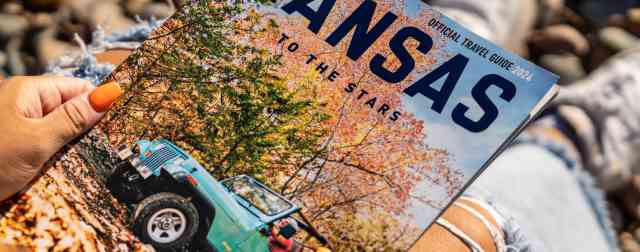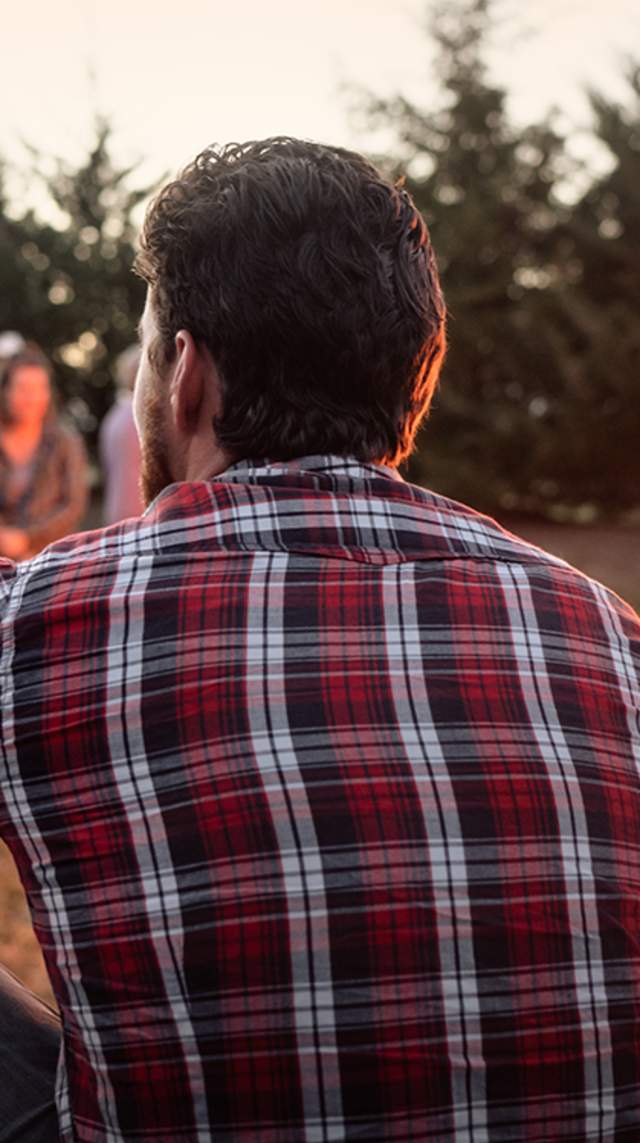Church of the Resurrection
You’ve never seen a stained-glass window like you’ll find in the Church of Resurrection in Leawood. This art installation is the largest stained-glass window known to exist worldwide, spanning 100 feet wide and 35 feet tall. This window was created with a unique ‘fused glass’ technique that mixes the colors and is bonded in a kiln, which creates vibrant color effects not seen in traditional stained glass. The design is known as a triptych, an art piece created and intended to be viewed as three scenes. The window tells the story of the Bible, from Genesis to Revelation, and features more than 70 people who have influenced Christianity, from Biblical to modern figures. Those memorialized in the art installation include John Wesley, Maime and Emmett Till, Mother Teresa, Rosa Parks, Martin Luther King Jr., C.S. Lewis, St. Francis of Assisi, Bishop Sundo Kim, and many more.
Resurrection Stained Glass Window
The Church of the Resurrection's stained glass window is a groundbreaking art installation made through a combination of twenty-first century techniques with fused glass combined with the time honored tradition of stained glass that dates back to the seventh century. It is the largest single stained glass window known to exist…
St. Mary’s Catholic Church
Don’t let the simple exterior fool you, the inside of St. Mary’s Catholic Church is a delight to the senses. You’ll find grand ornamentation, striking statues and priceless murals that will make your jaw drop. If you wander, you’ll also be able to find a peaceful grotto located northeast of the church. If you’re interested in learning more about the unique architecture and artwork throughout the church, tours are available when scheduled ahead.
St. Mary's Catholic Church
The church was enrolled as a Kansas Historic Site in 1978 and to the National Register of Historic Places in 1980. The church is of late Roman style. In contrast to its rather simple exterior, its interior is a superb example of spatial enrichment by decoration and ornamentation. On display are 14 large oil paintings including…
St. Fidelis Church
You may be familiar with the distant bell towers of St. Fidelis Church if you frequent I-70, but trust us… This church is worth seeing up close. Frequently known as the ‘Cathedral of the Plains’, a moniker given to the church by William Jennings Bryan during a visit in 1912. The St. Fidelis Church was declared a minor basilica in 2014, the first in Kansas and the 78th in the United States. The church is open to the public from dawn until dust and an audio tour is available. Individuals and groups may arrange a guided tour by contacting the Parish Office.
You’ll also want to make sure you check out the full Historic Churches of Ellis County tour. There are more historic, limestone German Catholic churches than any other county in Kansas. Many of these historic churches started out as small, wooden frame structures that were later replaced with the grand versions you see today. It’s recommended to call each church contact person in advance to arrange a tour (or to be sure the doors will be unlocked for your arrival.)
The Basilica of St. Fidelis - Cathedral of the Plains
St. Fidelis Church in Victoria, also known as the “Cathedral of the Plains”, was built in 1908-1911 of native limestone. This majestic church is built in the shape of a cross 220’ long and 110’ wide at the transepts, or lateral arms. The twin bell towers are 141’ tall and can be seen from miles around. The church was dedicated…
Historic Churches of Ellis County
There are more historic German Catholic churches made of native limestone in Ellis County then any other county in Kansas. We invite you to visit these impressive churches and enjoy the beautiful altars, stained glass windows, craftsmanship, and statues.You can begin your tour at whichever church works best to fit into your…
First Presbyterian Church
You’ll be amazed at the Tiffany Windows found on regal display at the First Presbyterian Church. The windows were fabricated by Louis Tiffany at the Tiffany Studios in New York and were installed in the church in 1911. While the church is temporarily limiting tours due to health concerns, you can find a history of the windows in the Youtube video below.
Tiffany Windows at First Presbyterian Church
Site of a unique and breath-taking display of original Tiffany stained glass windows. In 1911, Louis C. Tiffany came to Topeka from New York and produced these windows for the church. Open 8:30 a.m. - 4 p.m. weekdays, tours may be scheduled through the church office.
Cawker City United Methodist Church
The Cawker City United Methodist Church is home to the oldest pipe organ in Kansas. This intricate creation was built in 1889 by Pilcher’s Sons of Louisville for a church in Kinsley. The Cawker Methodist purchased the organ in 1931 and placed it in their original stone structure. However, in 1976, structural issues meant that the pipe organ found a new home in a new sanctuary and the old church was torn down. The organ was restored after its final move and is played at regular Sunday services to this day. You can take a look at this slice of Kansas history with a call ahead appointment.
Oldest Pipe Organ in Kansas-Methodist Church
Built in 1886 by Pilcher's Sons of Louisville, the organ is located in Cawker City's United Methodist Church. Pilchers of Kentucky built the organ for the congregational church in Kinsley, Kansas. At the time, it was the only organ in Kansas west of Emporia. In 1931, the Cawker Methodists bought the organ and placed it in their…
Stafford First United Methodist Church
I will admit, I am biased for this one since it is my hometown church, but I promise you, this building needs to be seen to be believed. The Stafford First United Methodist Church was built in 1927 and designed by Don Schuler, an architect who had trained under Frank Lloyd Wright in his Oak Park studio. In fact, Schuler assisted Wright as a draftsman and site architect on the construction of the Allen House found in Wichita. The majestic exterior of the building is designed in an English Collegiate Gothic style, a notable difference from other churches in the area. The sanctuary itself was inspired by Wright’s ‘modern masterpiece, the Unity Temple project.
The dark, detailed walnut woodwork throughout the sanctuary is unlike any other church that I have ever seen. Be sure to note the 36 stained glass boxes in the ceiling of the sanctuary. These lights bathe the sanctuary in a soft, yellow, sun-like light that reflects Wright’s concept that ‘light is the beautifier of buildings.’ The church has also recently added an elevator from the basement to the main level, and an additional lift into the sanctuary for those with accessibility needs. If you’d like to admire the exquisite handiwork, please call ahead to ensure availability.
Stafford First United Methodist Church
Whether one is interested in worshipping in beautiful places or simply motivated to visit due to the unusual architecture, a refreshing surprise is in store for anyone entering this special place. The church was built in 1927 and was designed by architect Don Schuler. Mr. Schuler not only worked for the famous architect Frank…
The Church Cottonwood Falls
This church is a little different from the rest in that it is not preserved as a place of worship but was updated to be a unique vacation rental for a charming excursion in Cottonwood Falls. While the building now includes bedrooms, multiple bathrooms, a spacious kitchen, and laundry facilities, you can still see the craftsmanship and historical tributes to the building’s previous life. You’ll still find the original communion glasses, stained glass, and lighting fixtures throughout the building. I’ve actually spent a weekend with a large group of friends in The Church, so I can definitely attest to its cozy feel and great location. You and your group will want to consider this for your next getaway!
The Church Guesthouse
Relax on the large rear deck grilling your favorite foods while watching the black squirrels scampering from tree to tree and limb to limb. or . . . in the winter, cozy up with a hot cup of coco and just imagine the horse-drawn sleds that undoubtedly used to pull up to these very front doors to deliver their precious cargo on…
Beecher Bible Rifle Church
This small limestone church is a piece of Kansas history. When the Kansas-Nebraska Act was passed in 1854, it allowed the citizens of Kansas to decide whether their state would be a free or a slave state. In response, many people moved to Kansas to influence that decision, including a group known as the New Haven Colony. This group arrived with rifles and 25 Bibles provided by the Henry Ward Beecher congregation in Brooklyn, New York. It took several years for the colony to save up enough money to create a proper church, but in 1862 these settlers joined together with others who had already called the area home and founded this small church to spread the message of freedom.
Local legend claims that when additional money was raised by Beecher and his East Coast congregation, the funds were spent on Sharp rifles, earning the nickname of ‘Beecher’s Bibles.’ These guns were then supposedly shipped to the Kansas plains hidden in the bottom of wooden crates marked, “Bibles.” Whether or not this tall tale is true is lost to history, but there was one documented case of a similar smuggling operation into Bleeding Kansas, so the legend may just be true. You can decide for yourself as you take the steps through history!
Beecher Bible and Rifle Church
When the Kansas-Nebraska Bill passed in May 1854, it allowed Kansans to have a say about whether theirs would be a free or a slave state. Many from outside the state came to Kansas to influence that decision. One group, known as the Connecticut-Kansas Colony, arrived with Sharps rifles and 25 Bibles provided by the congregation…
St. Martin Catholic Church Piqua
The charming bell tower at St. Martin Catholic Church can be seen for miles around. While the church no longer celebrates regular mass, the building has been lovingly maintained by the community and is still open to the public. The High Altar at St. Martin’s is spectacular, simultaneously sporting intricate detailing with a commanding presence in the room. Unfortunately, a cross on the top of the bell tower was damaged in the hurricane-force winds seen in Kansas on December 15, 2021, but local residents are banding together once again to restore this iconic community landmark.
St Martin's Catholic Church
Church is brick building with bell tower built in 1922. Come and see the beautiful grounds. The bell tower can be seen for miles. Although regular Sunday mass is no longer celebrated at the beautiful St. Martin of Tours Church, the building is still maintained and open to the public. It is open 24 hours a day seven days a week…
Mary Queen of Peace Catholic Church
This church is not like the others. The architectural design of the Mary Queen of Peace Catholic Church in Ulysses is unlike anything else I have seen in Kansas. This church is a stunning example of hyperbolic paraboloid architecture, a design concept that is wildly beyond my realm of comprehension but is beautiful to look at, nonetheless. This is probably the only triple-roof, lattice-type, hyperbolic paraboloid church in the world, an incredible feat that is palpable as you admire the building. The structure also lends itself to continuous stained-glass windows that put on a kaleidoscopic effect for those who step indoors. This is a masterpiece of modern design that you don’t want to miss!
Mary Queen of Peace Catholic Church
The Mary Queen of Peace Catholic Church is a stunning example of hyperbolic paraboloid architecture and is probably the only triple-roof, lattice-type, hyperbolic paraboloid church in the world. This church has to be seen to be believed. The unique architecture lends itself to hosting stunning continuous stained-glass windows in…















